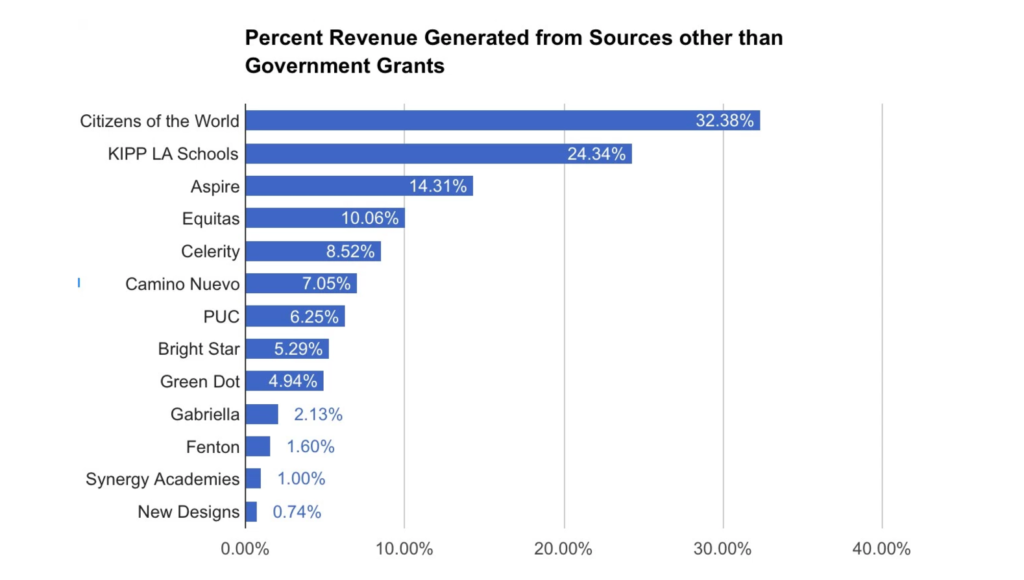Written by Benjamin Feinberg | Dec 12, 2016 5:00:00 AM
I was scrolling through my Facebook feed and came across this piece of news: Kipp Ignite Academy has received $100,000 through a Farmers Insurance Thank America’s Teachers grant. First of all, congratulations—more money for schools is always awesome. And then it got me thinking: How much money do KIPP and other charter schools get from non-governmental grants? One way to look at is to think about their total revenue. Of course, schools get money on a per student basis from the state government. However, charter schools in California receive less money per student from the state, in facilities funding and per-pupil funding—and they have had to find a variety of ways to make up that funding including co-location and private grants. Schools can get extra money by applying for government grants, such as those from the U.S. Department of Education, or private grants, such as those from the Bill and Melinda Gates Foundation or Great Public Schools Now. Schools can also raise money through traditional fundraising and gifts from individuals. While government grants are hard to tease out in public documents, private grants and gifts are written on a separate line of tax documents—so we can see exactly how much revenue each group gets from non-governmental sources.


What Does It All Mean?
Let’s flesh out the arguments a bit for both sides so you can think about it through those lenses. People who are opposed to this kind of private money would argue that this is not a sustainable source of funds. One day, if a philanthropist decides to pull the plug on these contributions, then the school will be in trouble and unable to sustain itself. I find that argument to be rather false. For example, KIPP is certainly getting a lot of money, but it also has a ton of money in reserve. It only spent 79 percent of its revenue in 2015, and at the end of the year was sitting on a cash reserve that exceeded $20 million. I think they’ll be just fine even if the cash doors are closed. On the other side of the debate are people who support this kind of money in schools. They might argue that schools that seek and obtain private grants are just doing a service for their students. I also find that argument to be rather flat. When schools are heavily competing for philanthropy, that encourages parents to choose the best funded school. Not all students can go to that school, so inevitably, some kids go to less well-funded schools—which is inequitable. By trying to counter the existing inequity, this just creates a new inequity. As always, I am a fan of the happy medium. There has to be balance—schools should definitely apply for private grants but they shouldn’t over rely on them. They should make sure their school is successful, and can be successful even without the perks of philanthropy.
An original version of this post appeared on School Data Nerd.